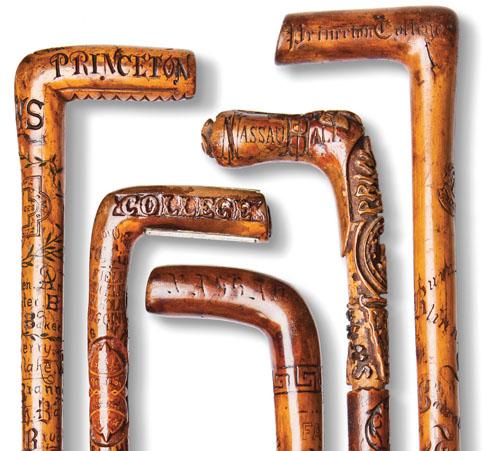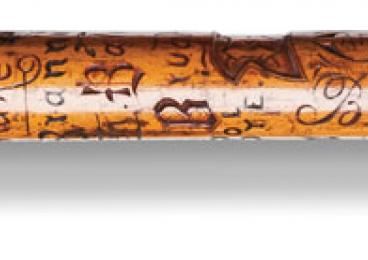
What: The rural folk tradition of cane carving briefly flowered into a college fad during the Civil War era.
In 1863, Clay MacCauley 1864 returned from fighting in the Civil War, during which he was briefly imprisoned by the Confederates in Virginia, to a campus where there was an “epidemic of cane carrying and carving that spread among the undergraduates,” he later recalled. “Canes, big and little, graceful and ugly, slender and stout, became treasured personal property, and many hours were spent by the boys in passing canes about for the carving of their names."

The riot became an annual custom, the classes colliding at midnight on Nassau Street or on the grassy sward behind East College, trying to grab canes in a bruising “cane spree.” In vain did McCosh wave his hands and shout, “Disperse, young men, or the bailiffs will be after you!”
Cane-carrying is extinct, but Cane Spree – in bloodless form – remains an autumnal tradition on campus.
Where: Collection AC53, Mudd Manuscript Library
